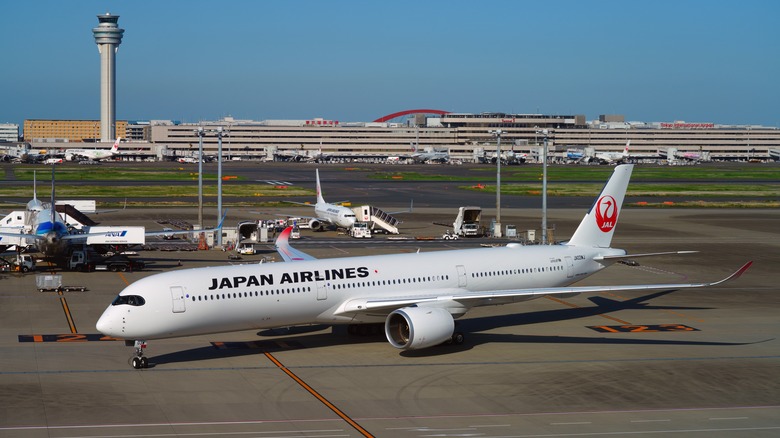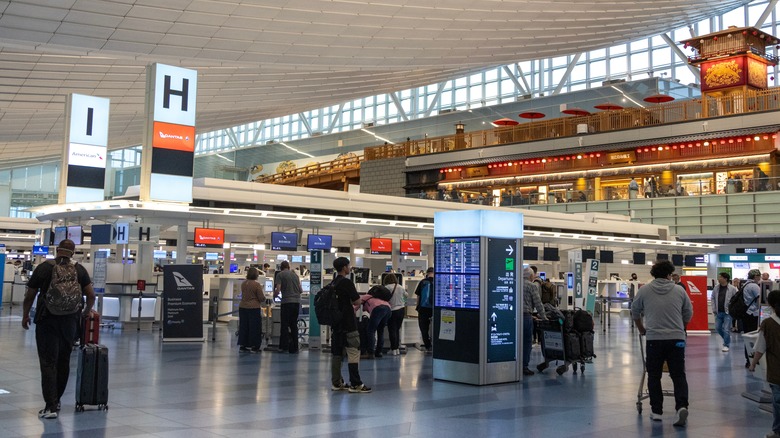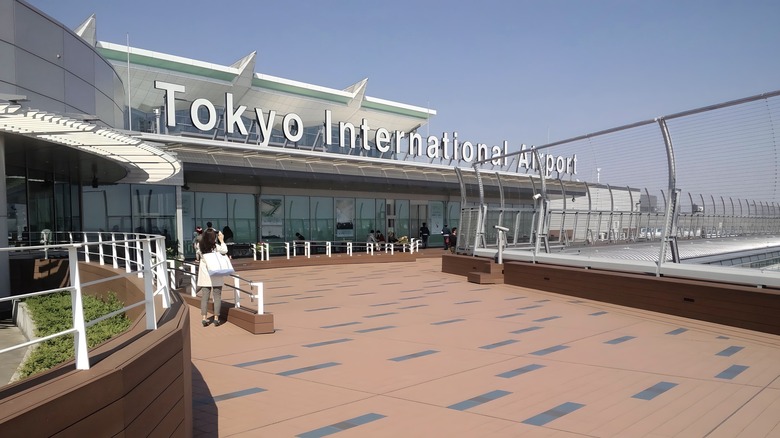This Inviting Airport In Tokyo Continues To Reign Supreme As The Cleanest In The World
Like New York City, Tokyo is served by two main airports, but only one of them has topped the world's cleanest airport list for 10 years straight. That distinction belongs to Haneda Airport, which is still the cleanest in the world according to a customer satisfaction survey conducted by Skytrax for its 2025 World Airport Awards. The methodology for the annual survey takes into account factors like "terminal cleanliness, floors, seating and public areas," as well as "cleanliness of washrooms" and general "hygiene standards." Over 575 airports showed up in the latest results, which were gathered online at www.worldairportsurvey.com from August 2024 to February 2025.
Haneda Airport, otherwise known as Tokyo International, has occupied the list's number one spot for a full decade now, but it's not the only Japanese airport featured this year. Coming in at number six through eight on the list were three other major airports in the same country: Chubu Centrair International (near Nagoya), Narita International (outside Tokyo), and Kansai International (in Osaka). Sapporo's New Chitose and the domestic Osaka Itami also appeared on the list of cleanest airports serving 25 million passengers and under.
What's clear from all these rankings is that Japan knows a thing or two about keeping its airports clean. So, what's the secret to Haneda's 10-year run of success? How does it manage to stay spick-and-span, despite being the busiest airport in the country, with around 90 million travelers passing through its squeaky-clean terminals every year?
Robots and highly dedicated people keep Haneda clean
If you're ever in Haneda Airport and you happen to see a robot labeled "Cyberdyne" roll by, don't be alarmed. This isn't the nightmare future that the movie "Terminator 2: Judgment Day" warned about (where the fictional Cyberdyne Systems ushered in the rise of the machines). In fact, the real-life Cyberdyne Inc., together with the Amano Corporation, serves as one of the manufacturers of Haneda Airport's high-tech cleaning robots. These self-moving robots, which can even board elevators on their own, automatically vacuum the carpets and sterilize Haneda's stain-resistant floors.
The robots come equipped with optional UV sanitizers and sprayers to help further disinfect the floors. Haneda Airport has robot-enabled information counters as well, and a branch of the Henn na (meaning "Strange") Hotel, which has a front desk staffed by "two dinosaurs and one lady" robot, is a short shuttle bus ride away. Haneda touts the coordinated efforts of its robots and conscientious human staff in keeping it the world's cleanest airport. The staff's dedication stems from both pride in one's work and a sense of responsibility that is deeply ingrained in Japanese culture. In schools across Japan, students learn from an early age to clean their own classrooms every day rather than rely on janitors.
That carries forward into the work of professional adult cleaners like Haruko Niitsu, who approaches Haneda Airport as a guest-facing symbol of Japan. Niitsu told Tokyo Updates, "I always keep in mind that this is where people get their first impression of what kind of country Japan is, and what kind of city Tokyo is. Japanese people are hygienic, good at handling fine work and very diligent. We want to convey that through our cleaning work."
Haneda Airport is as convenient as it is clean
In addition to topping the Skytrax survey for cleanliness, Haneda is arguably the most convenient airport for accessing Tokyo. Though Narita Airport serves Greater Tokyo, it's located outside the city limits in the neighboring Chiba Prefecture. When you board the Narita Express, it can take an hour and a half or longer to get from the airport to Shinjuku, a major gateway to Tokyo and the world's busiest train station. With the JR Yamanote Line and Tokyo Monorail, by contrast, you can reach Haneda in half the time, as it only takes about 45 minutes from Shinjuku.
When I first moved to Tokyo in 2010, Haneda had a reputation for fielding domestic flights more than international ones, with Japan's two biggest airlines, JAL and ANA, operating out of Terminal 1 and 2, respectively. In October of that year, however, Haneda opened the new international Terminal 3, which expanded its capacity in 2014. When I booked my first international flight with an infant in 2025, I made sure to do it through Haneda, just so we'd have one less thing to stress about on the way to and from the airport.
Singapore's Jewel Changi, the airport with the world's largest indoor waterfall, ranked as the best airport overall on Skytrax's 2025 list, but Haneda wasn't far behind it, placing at number three there, too. While there's no majestic waterfall, Haneda has a few other things to keep you occupied, such as observation decks in each terminal, where you can watch planes taking off and landing. As of this writing, the deck in Terminal 3 is temporarily closed, but you can still shop and dine in the Edo Kōji, a 17th-century-themed Japanese market on the fourth floor.


